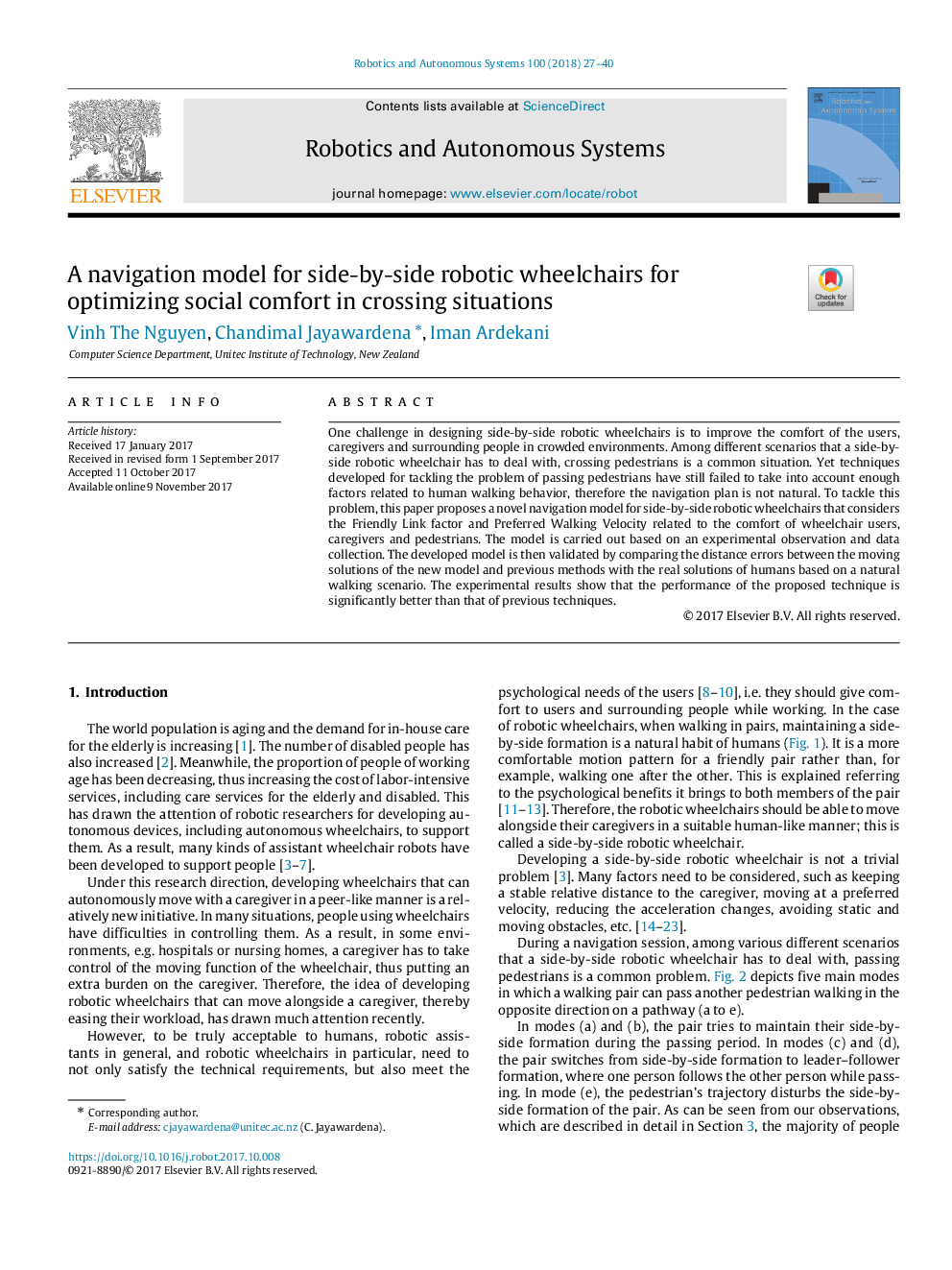| Article ID | Journal | Published Year | Pages | File Type |
|---|---|---|---|---|
| 6867298 | Robotics and Autonomous Systems | 2018 | 14 Pages |
Abstract
One challenge in designing side-by-side robotic wheelchairs is to improve the comfort of the users, caregivers and surrounding people in crowded environments. Among different scenarios that a side-by-side robotic wheelchair has to deal with, crossing pedestrians is a common situation. Yet techniques developed for tackling the problem of passing pedestrians have still failed to take into account enough factors related to human walking behavior, therefore the navigation plan is not natural. To tackle this problem, this paper proposes a novel navigation model for side-by-side robotic wheelchairs that considers the Friendly Link factor and Preferred Walking Velocity related to the comfort of wheelchair users, caregivers and pedestrians. The model is carried out based on an experimental observation and data collection. The developed model is then validated by comparing the distance errors between the moving solutions of the new model and previous methods with the real solutions of humans based on a natural walking scenario. The experimental results show that the performance of the proposed technique is significantly better than that of previous techniques.
Related Topics
Physical Sciences and Engineering
Computer Science
Artificial Intelligence
Authors
Vinh The Nguyen, Chandimal Jayawardena, Iman Ardekani,
